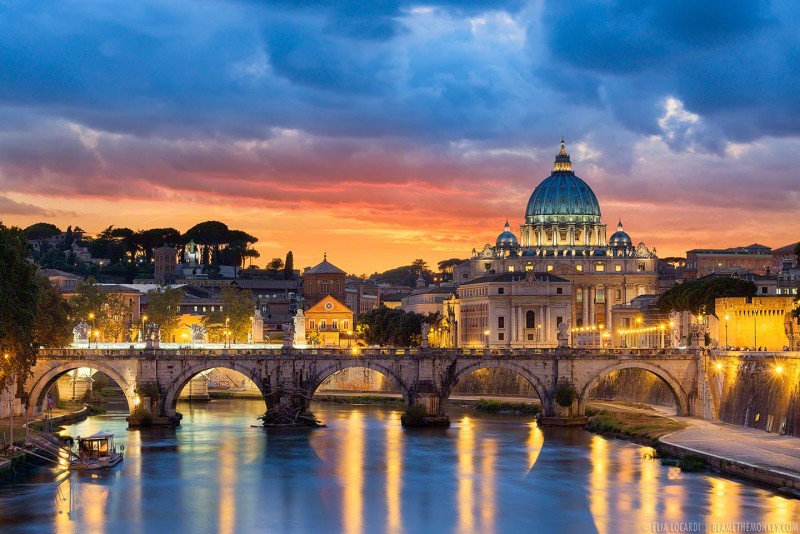
Rome, the eternal city, is a treasure trove of history and ancient marvels. From iconic landmarks to well-preserved ruins, it offers a captivating journey back in time. In this article, we will explore the top historical sites in Rome that continue to amaze visitors from around the world.
Rome, the capital city of Italy, is a city that breathes history. It boasts a rich and vibrant past that dates back over two and a half millennia. Each corner of the city is adorned with architectural wonders and ancient ruins that narrate fascinating stories of emperors, gladiators, and gods. Let's delve into some of the most prominent historical sites that make Rome a timeless destination.
The Colosseum: A Grand Amphitheater
The Colosseum, also known as the Flavian Amphitheater, is a UNESCO World Heritage Site and one of the most iconic symbols of ancient Rome. Constructed in 70-80 AD, this grand amphitheater was used for gladiatorial contests and public spectacles. It could accommodate up to 80,000 spectators and remains an engineering marvel of its time.
The Pantheon: A Temple of the Gods
The Pantheon, originally built as a temple dedicated to all gods, stands as a testament to Roman engineering brilliance. Its iconic dome with an oculus remains the world's largest unreinforced concrete dome. The interior houses the tombs of notable figures, including the renowned artist Raphael.
The Roman Forum: A Political and Social Hub
The Roman Forum was the heart of ancient Rome, bustling with political, religious, and social activities. It served as the city's marketplace and hosted important events and ceremonies. Visitors can explore ruins of ancient temples, basilicas, and arches, gaining insights into Rome's glorious past.
The Vatican City: A Spiritual Center
While technically an independent city-state, the Vatican City is entirely surrounded by Rome. It is the spiritual and administrative center of the Roman Catholic Church and home to renowned landmarks such as St. Peter's Basilica and the Vatican Museums, which house an extensive collection of art and historical artifacts.
The Palatine Hill: A Royal Residence
The Palatine Hill is one of Rome's seven hills and was the residence of emperors during the Roman Republic and Empire. Today, it offers visitors a chance to explore well-preserved ruins of ancient palaces and lush gardens with stunning views of the city.
The Baths of Caracalla: Lavish Public Baths
The Baths of Caracalla were among the largest and most luxurious public baths in ancient Rome. Built in the 3rd century AD, they could accommodate over 1,600 bathers at once. The site's impressive ruins give a glimpse into the opulence and grandeur of Roman bathhouses.
The Appian Way: An Ancient Road
The Appian Way, also known as the "Queen of Roads," was one of the most important ancient Roman roads. It connected Rome to the southern regions of Italy and played a significant role in the empire's expansion. Walking along this historic road is like stepping back in time.
The Capitoline Hill: A Symbol of Power
The Capitoline Hill is the smallest of Rome's seven hills but holds immense historical and symbolic significance. It was the citadel of the earliest Romans and later became the religious and political center of the empire. The hill now hosts the Capitoline Museums, housing a vast collection of art and artifacts.
Trajan's Market: A Multilevel Shopping Complex
Trajan's Market is believed to be the world's oldest shopping mall. Constructed during Emperor Trajan's reign, it consists of several levels of shops and offices. The complex is an exceptional example of ancient Roman architecture and urban planning.
The Castel Sant'Angelo: A Fortress with a History
Originally built as a mausoleum for Emperor Hadrian, the Castel Sant'Angelo later served as a fortress and castle. It witnessed various historical events and has connections to the Vatican. Today, it stands as a museum displaying artifacts and art from different periods.
The Trevi Fountain: A Baroque Masterpiece
The Trevi Fountain is a stunning Baroque fountain located in the heart of Rome. It is the largest fountain in the city and a popular destination for tourists. Legend has it that tossing a coin into the fountain ensures a return trip to Rome.
The Spanish Steps: A Famous Staircase
The Spanish Steps are an elegant staircase that connects the Piazza di Spagna and the Trinità dei Monti church. It is a favorite spot for locals and visitors to relax and enjoy the picturesque surroundings.
The Piazza Navona: A Stunning Square
The Piazza Navona is a beautiful square adorned with stunning Baroque architecture. It features three exquisite fountains, including the famous Fountain of the Four Rivers created by Gian Lorenzo Bernini.
Rome, with its rich tapestry of historical sites, is a city that mesmerizes and leaves a lasting impression on all who visit. Its ancient wonders transport visitors to a bygone era, where the grandeur of the Roman Empire comes to life. Exploring these top historical sites in Rome promises a journey of awe, fascination, and discovery.
Top Attractions in Paris, France